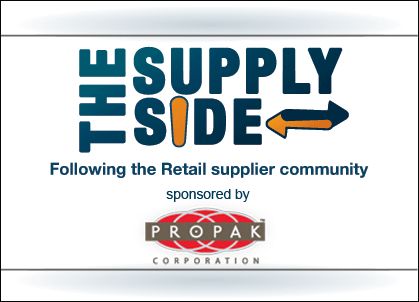The Supply Side: Mispriced items can cost sales for suppliers, retailers
by August 9, 2016 7:49 pm 2,145 views

Editor’s note: The Supply Side section of Talk Business & Politics focuses on the companies, organizations, issues and individuals engaged in providing products and services to retailers. The Supply Side is managed by Talk Business & Politics and sponsored by Propak Logistics.
––––––––––––––––––
Price matters. Retailers like Wal-Mart pride themselves on everyday low prices and “the customer is always right” mantra. So when a price mistake occurs at the retail shelf and a $12 LED lightbulb is marked down to $1.20 who takes the loss?
In most cases the store cashier will honor the lower price and the store gets dinged for the mistake. However, suppliers also face risks when prices are incorrect at the shelf, according to retail experts.
Dr. Chris Medenwald, an analyst with Fayetteville-based Field Agent, recently highlighted common reasons why consumer products are misplaced at retail in a blog post. He said with one passing glance a price tag can often make or break a sale.
“An unappealing price, as perceived by the shopper, is a double-edged sword. Not only will you lose an immediate sale, you may also say goodbye to a customer for life – since they’ve already made a determination about your brand such as it’s too expensive or perhaps for other items, it’s too cheap,” he noted.
He said suppliers often emphasize sales price and for those doing business with Wal-Mart and Sam’s Club stores that is always the case. But with more than 4,500 different stores across the U.S. how do suppliers know the prices that shoppers see at the shelf are the right ones.
“Retail partners might, after all, misprice your products, leaving you and others wondering why sales are so disappointing,” he added.
HUMAN ERROR
The most obvious reasons an item is wrongly priced is because of human error. He said pricing errors can occur in simple misprints, or products can be missed within a certain category or item that is supposed to have a price adjustment. There is also the chance of pricing information being accidentally overlooked by store workers.

CVS made the mistake in 2011 of incorrectly pricing a Zhu-Zhu toy pet item. The price should have been 20% off the $20 price. But a pricing error was made as the stores advertised the toy items for 5 for $10 or $2 each. The items were sold at 7,000 stores and the retailers took a huge loss as the product sold out in a few hours time.
Such mistakes are not that common according to Jami Dennis, CEO of Vendor Masters in Bentonville. She said prices are usually wrong because of human error at the store or a structural issue where it’s wrong in the retailer’s inventory system which is typically set up by the supplier or a consultant representing them.
She said it is also possible for store managers or buyers to reduce a certain price because of competitive issues in a particular market and they don’t always tell the supplier they are doing it.
“Once a buyer reduced a Walmart price to be more competitive in the H-E-B market in order to try and gain some marketshare from that retailer, which they can do. When it works the product will usually sell through and the supplier can always see the prices of their products within Walmart’s inventory system by running a simple report on the Retail Link portal,” Dennis explained.
She said the one thing suppliers will want to monitor in such cases is to be sure the buyer and supplier margins are protected with the lower price, because if the margin is not there for the buyer there is always a chance they could discontinue the product. She said a short term price decrease is not typically a problem, but a longer-term lower price could drive down an item’s average price and negatively impact a supplier’s scorecard rating.
DESYNCHRONIZATION
Products may also be mispriced because of desynchronization. Dennis said when a new item is created and set up in Walmart’s system there could be a mistake made with respect to cost, color or quantity, for example. She said in cases like this the problem is more global and 9 times out of 10 it’s caught within the first 24 or 48 hours a product is on the shelf.
When this happens the item when scanned in a store may indicate “item not found” in which the cashier has to use the shelf price, which might or might not be the correct price.
Dennis said when the mistake is made in the item set-up, at the very least there will be a conversation with the supplier to discuss who eats the charge because the supplier will likely have some liability. She reiterated that suppliers can easily track the sales of their products to the store level using Retail Link and it’s to their advantage to look at the pricing reports on a regular basis, if they aren’t using a consultant to monitor that for them.
She said if there is a pricing problem it will show up in the sales numbers. The one exception would be for suppliers like bread companies and bottlers who deliver directly to the stores, bypassing the distribution centers. She said those reps can rectify a pricing problem on the spot in the store by filling out some paperwork.
